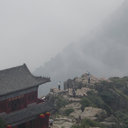Risk factors of age-related cataract in a Chinese adult population: the Taizhou Eye Study.
Atslēgvārdi
Abstrakts
OBJECTIVE
Cataract risk factors data will provide epidemic evidence for cataract prevention.
BACKGROUND
This study aimed to study the risk factors for age-related cataract in a Chinese adult population.
METHODS
This is a population-based, cross-sectional study.
METHODS
A total of 10 234 eligible subjects ≥45 years old (response rate: 78.1%) were included in the study.
METHODS
We conducted detailed eye examinations including presenting visual acuity, best-corrected visual acuity, slit lamp examination of lens opacities and fundus examination. Questionnaires about lifestyle were administered. Measurements of blood pressure, heart rate and body mass index were collected. Serological metabolic indicators, including fasting blood glucose, triglycerides, cholesterol, lipoprotein, were also evaluated. We used stepwise multivariate logistic regression model to evaluate the association of these risk factors with any cataract and subtypes of cataract.
METHODS
Odds ratios of risk factors for cataract were calculated.
RESULTS
For any cataract, we found age, gender (female), increased outdoor activity, no outdoor eye protection, high myopia, high low-density lipoprotein, low high-density lipoprotein, lower education level and increased pickled food intake were independent risk factors. When further examined the risk factors of different subtypes of cataract, we found that these risk factors also existed, but there were slight differences among different subtypes. In addition, for cortical cataract, lower annual family income and high diastolic pressure were additional independent risk factors.
CONCLUSIONS
Reduced outdoor activity, outdoor eye protection, prevention of high myopia, higher education level, controlled blood pressure, improved high-density lipoprotein and low-density lipoprotein levels and reduced pickled food intake may help to reduce the risk of age-related cataract development.





